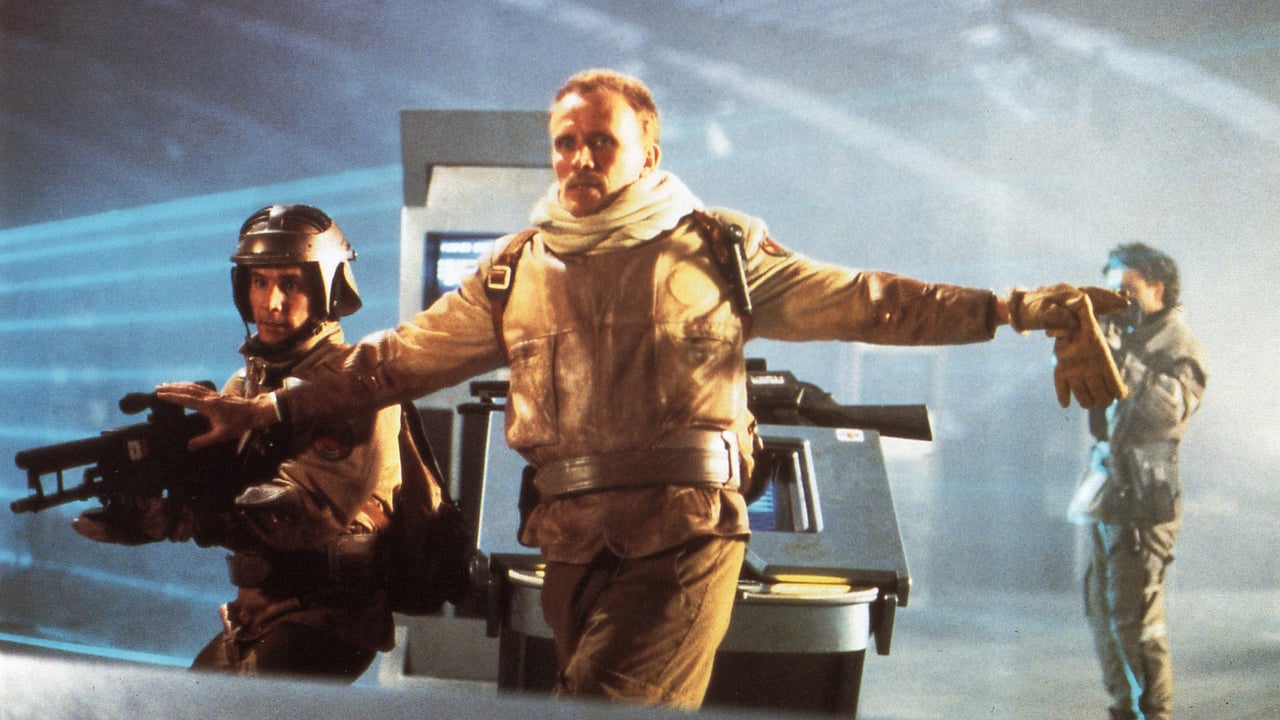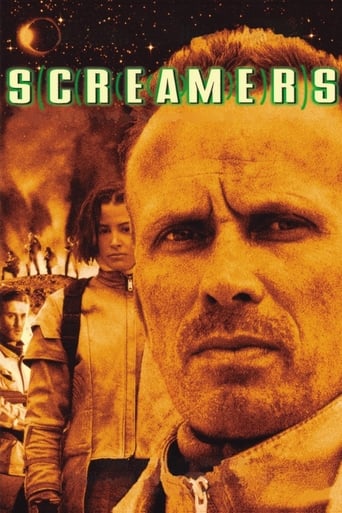

A sub-par science fiction tale dealing with intelligent robot life, this has been done too many times to be constantly entertaining, although there are a few choice moments. Frankly I'm pretty sick of the gloomy, grungy, depressing tone of a lot of modern thrillers like SEVEN and HARDWARE, and obviously that kind of atmosphere has rubbed off on the makers of this film who do their best to make their world look as dull and horrible as possible.The story itself - based on Philip K. Dick's novel - is not too bad, dealing with A.I. and an interesting race of self-replicating robots. Unfortunately the film should have concentrated on these robots as they are the most interesting thing about the film, but instead human relationships are the main focal point, and they're really not that interesting.On another note, if you're expected good special effects, then look elsewhere. The original flying spheres (like something out of PHANTASM) are shown only briefly a couple of times, and then gone for the rest of the film. The only time we see them is when they're underground like the worms in TREMORS. The use of children as merciless killers is a clever idea - see the original VILLAGE OF THE DAMNED for another menacing example - and this film has one excellent moment, where Weller and his friends desperately fight a never-ending stream of robotic killers issuing from an army base. It's this kind of visual theme which makes SCREAMERS stand out a bit from the rest.The cast itself is okay, yet nothing special. Peter Weller is rather good as the charismatic, ageing hero, and proves himself well in the action sequences. It's good to see him in another film. However, everybody else is merely middling. The action scenes are well staged, especially the ending, but are frequently at the expense of the plot. Still, for a science fiction film you could do a lot worse; just try watching TERMINAL FORCE.
... View MoreBy 2070 a galactic war has erupted between corporate and state powers fighting over resources on a Syrius 6B. After nuclear attacks by the NEB corporation the opposing Alliance employs automated robotics called Screamers to turn the tide of the war. Deep in the bowels of the planet the machines fabricate robot warfare, which in time evolve and start building bigger better products. Facing annihilation after the lengthened war captain Joe Hendricksson (Peter Weller) responds to a seize fire and embarks on a journey to the enemy bunker to undertake peace proceedings. Unfortunately for him the path may have been chosen too late...Post-mortem Philip K. Dick doesn't get much love from scriptwriters and the story "Second Variety" is no exception. For someone so cerebrally metaphysical movies based on his novels tend to take a action turn for the worse, dissolving the underlying essence of his stories and frontally assaulting with visual high-octane spectacles. "Screamers" is a low-budget take on the latter, albeit with some undeniable atmosphere to back it up.Nonetheless based on a clichéd ridden script with thinly developed characters spewing out tirades of one-liners occasionally interrupted by Shakespeare quotes, "Screamers" is an undeniable work in progress having some wider appeal, but lacking substance to stand the test of time. Budget and technological limitations to the movie decrease the overall quality, but the underpinning problem is one of limited tension, surprise and a multitude of scenes, which essentially lack sense or reason. Somewhere within this world lies potential much in the vein of "Bladerunner", but inept direction overly focused on churning out action brings Weller and the remaining cast down with its undertow. Plastic people with plastic morality ultimately divert attention from possibilities making us focus on the superficiality of the effort.
... View MoreThere are two sides at war, but the war is winding down, it looks like one side has won, and the other side wants a truce... The trouble is that the autonomous weapons systems that the winning side deployed (called "screamers") and which helped them win, have other ideas. It stars Peter Weller, from Robocop.On the face of it, this looks like it'll be a by the numbers crappy scifi thriller horror with paper thin characters and wooden acting, and at best some testosterone fueled action movie sequences... That's what I thought anyway. I was very wrong.The acting was all extremely well done, especially by Weller. I was very impressed. Very good performances by all. The filming was atmospheric and well shot. Sets were great, props and costumes too. The story was full of emotion, it was thought provoking and well acted. This was an intelligent film!It was let down in two areas: 1. For most of the film the effects were very cheap, contrasting with the quality of the rest of it. 2. They lent a little too much on the cheap thriller aspect in parts of it, especially at the very end. It detracted a little from the intelligent themes and great acting. It's almost as if there were two competing forces at work: Highly competent, professional, pro, A-list film makers VS some strange incompetent cretin who BADLY wanted it to be a B-film. So it was flawed.
... View MoreI originally saw this movie in the theatre. Many reviewers comment saying it should have gone straight to video but I don't think so. As this movie for its time was not that bad. I have seen this movie about 6 times since 1995 and every time I have enjoyed it.Could this movie have been better? Of course! But for what it cost and for what kind of movie it is, it is alright! Its such an interesting premise I would LOVE to see this movie remade with a good director and a large movie budget! As that would be GREAT! Screamers did have a OK script, it had a great story, OK character and storyline development. All in all it was an OK 1995 film. As most sci-fi goes it is not the worst at all! Screamers was an original movie and it is entertaining so if you get the opportunity to see it, I recommend you check it out if you like sci-fi movies.
... View More